Buffalo Grass: A Low-Maintenance Lawn Option
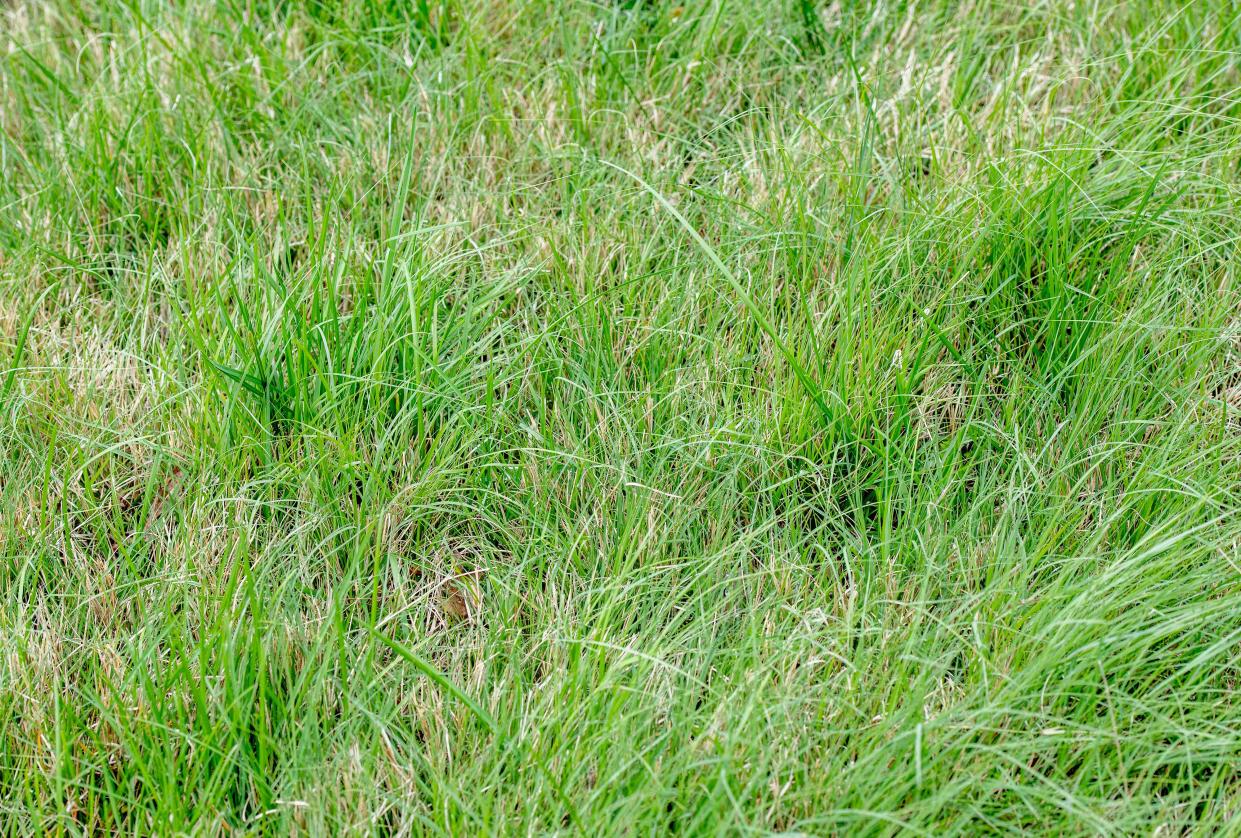
The Spruce / Adrienne Legault
Reviewed by Andrew Hughes
Buffalo grass (Bouteloua dactyloides) is a warm-season grass native to North America. Its low maintenance and drought tolerance make it a good alternative to other types of turfgrass. As a warm-season grass, it even has relatively good cold hardiness.
For a more manicured look, mow buffalo grass infrequently. Or, for a natural look, leave it untouched. By abstaining from mowing, you allow the grass to flower and go to seed, attracting wildlife such as birds and butterflies. Either way, buffalo grass is an attractive lawn alternative that cuts down on irrigation and landscape maintenance.
Tip
Buffalo grass has adapted to the dry conditions of parts of the North American prairie, to which it is native. It survives on very little rainfall.
Classification | Bouteloua dactyloides |
How It Spreads | By reseeding and by stolons |
Shade Tolerance | Poor |
Drought Resistance | Very good |
Foot Traffic Tolerance | Fair |
Maintenance | Can be low |
Mowing Height | Mowing is optional |
Soil pH | Slightly acidic to slightly alkaline |
Soil Type | Well-drained loam with good amount of clay |
Where It Grows Best | Throughout most of North America |
Lifespan | Long-lived |
What Is Buffalo Grass?
Buffalo grass (or buffalograss) is a perennial, warm-season grass that is a member of the Poaceae family. It spreads fast by seed and stolons, and it forms a dense sod. It forms dense clumps, reaching 8 inches in height and 12 inches in width.
Tip
Stolons and rhizomes are types of shoots that grass plants put out, allowing them to spread. Stolons grow above ground, while rhizomes grow underground.
Because it has long roots, buffalo grass is a good choice if you want to grow turf on a hillside for erosion control. Unlike buffalo grass, many other types of grass have shallower root systems and are ineffective at holding back soil.
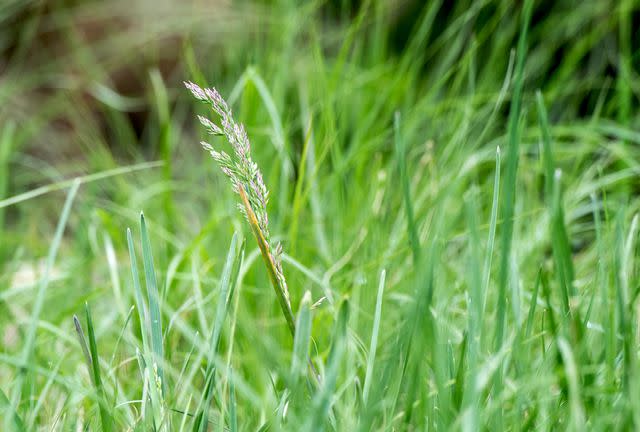
The Spruce / Adrienne Legault
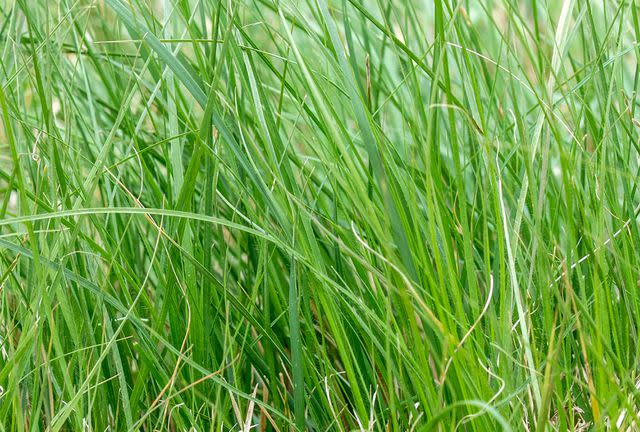
The Spruce / Adrienne Legault
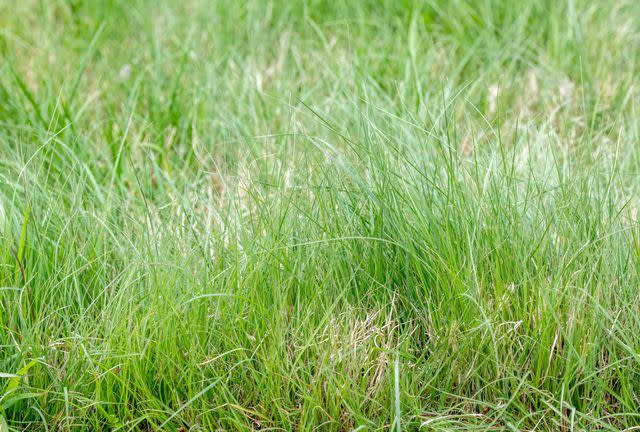
The Spruce / Adrienne Legault
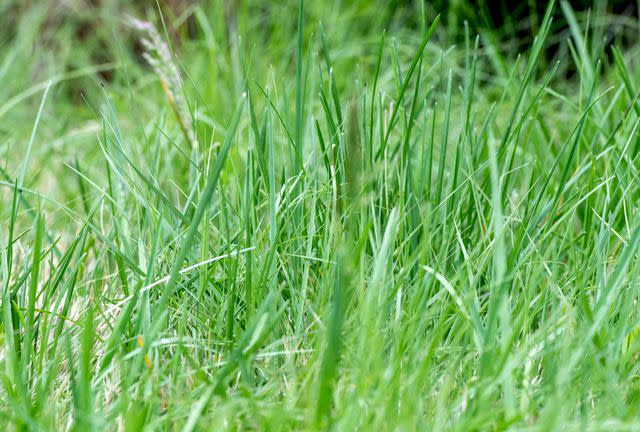
The Spruce / Adrienne Legault
Pros and Cons of Buffalo Grass
Pros
Extremely hardy
Very drought-tolerant
Native to North America
Attracts wildlife if allowed to flower
Suitable choice for a natural look that doesn't need mowing
Tolerates heat well
Soft, easy on bare feet, great for pool areas
Cons
Warm-season grass will not look good during the cold months
Forms dense clumps, not a uniform lawn
Not shade-tolerant
Holds up only moderately well to foot traffic
Not a smooth surface like other types of lawn grass
Planting Buffalo Grass
You will need to start from scratch if you want to switch from conventional turfgrass to buffalo grass. It is not possible to overseed buffalo grass in another turfgrass.
It takes a long time to establish a lawn of buffalo grass by sowing seed, so homeowners often start it from plugs or sod. If you do choose to start it from seed, there are some tricks you need to know:
Buffalo grass seed will not germinate until the soil temperature has reached 60 degrees Fahrenheit. But it is okay to sow the seed a little ahead of time if you don't mind waiting.
People generally sow buffalo grass seed from April to September.
The seed needs light to germinate, and the soil should be kept moist (but not drenched).
When buying, the seed package should say "treated." This indicates that you have seed with the maximum chance of germinating once the soil is warm enough.
If you choose the plug method of starting a buffalo grass lawn, there are spacing considerations. The lawn will develop faster if you plant plugs 5 inches apart. But if you want to save money and don't mind waiting for the lawn to grow in, space them up to 12 inches apart. Keep the soil moist until the plugs become established.
The sod method is the quickest, as you will simply roll out the sod. For sod, keep the soil moist but not soaked until the root system has taken hold.
No matter which method of planting you choose, most of the work will come in the form of preparing the soil ahead of time. This includes having the soil tested and adding the appropriate soil amendments.
Care and Maintenance for Buffalo Grass
Buffalo grass may be a lot of work to establish, especially if you use the seeding method. After that, you will have a very low-maintenance lawn. Even if you plan on mowing buffalo grass, it should be mowed higher (5 inches) than most grasses, which means you won't have to mow very often.
If you are attracted to buffalo grass because you do not want to mow the lawn at all, opt for a cultivar. There are seed, plug, and sod cultivars, but you are somewhat limited in your choices: Some types are available only as sod or as plugs and although you will pay more for these, they offer the best quality. Moreover, some of the cultivars stay shorter (ideal for a no-mow lawn). For example, while the species plant reaches 8 to 10 inches in height, the cultivar, 'Prestige,' matures at 4 to 6 inches tall.
Fertilize buffalo grass twice a year with 1 pound of nitrogen per 1000 square feet. Make one application in late May to mid-June; make another in late July.
Weed control is a bit trickier. It is safe to use a pre-emergent herbicide such as dithiopyr in spring. However, using post-emergent herbicides such as 2,4-D on buffalo grass during the growing season can damage it. A safer alternative is to wait until the grass is completely dormant and use glyphosate for weed control.
Cost of Buffalo Grass
The more work you have to put into the planting process, and the longer you have to wait for results, the less it will cost. Starting a buffalo grass lawn from seed is the most labor-intensive and requires the most patience, but buying seed is the best bargain of your three choices. Laying sod is a breeze, and the result is an instant lawn, so you will pay the most for that option. The cost for plugs falls in the middle of seed and sod.
A pound of buffalo grass seed costs about $50 and covers about 330 square feet.
The average cost of a plug of a quality cultivar of buffalo grass is $1. For example, you may buy a flat of 70 plugs for $70. If you don't mind waiting for a lawn and space the plugs 12 inches apart in each direction, they would cover 70 square feet.
Sod is sold by the "pallet." For a quality cultivar, sod will typically sell for about $250 per pallet, which will cover approximately 450 square feet.
Key Takeaways
Buffalo grass is a warm-season grass.
Mow infrequently or leave untouched.
It's drought-tolerant.
It spreads fast once established.
Long roots are great for erosion control.
Buy treated seeds or plugs.
Frequently Asked Questions
Is buffalo grass good for a lawn?
Yes. Buffalo grass is a good choice for a lawn, especially in low-rainfall regions where drought tolerance is a must.
Is buffalo grass hard to grow?
Buffalo grass is difficult to grow from seed, but, once established, it is not hard to maintain. One of the virtues of buffalo grass is its toughness, a feature to be expected considering the variety of environments it grows wild in across the North American landscape.
Does buffalo grass spread easily?
Yes. Because of its stolons, buffalo grass does spread well as long as it is located in full sun.
Is buffalo grass inexpensive to plant?
It's inexpensive if you grow it from seed. But, as with all lawn grasses, installation costs go up if you choose the plug or sod methods.
Are there any grasses similar to buffalo grass?
Buffalo grass is a grama grass in the Bouteloua genus. Other grama grasses are blue grama (Bouteloua gracilis), side oats grama (Bouteloua curtipendula), and hairy grama (Bouteloua hirsuta).
Read Next: What to Know About Kentucky Bluegrass and How to Care for It
Read the original article on The Spruce.

